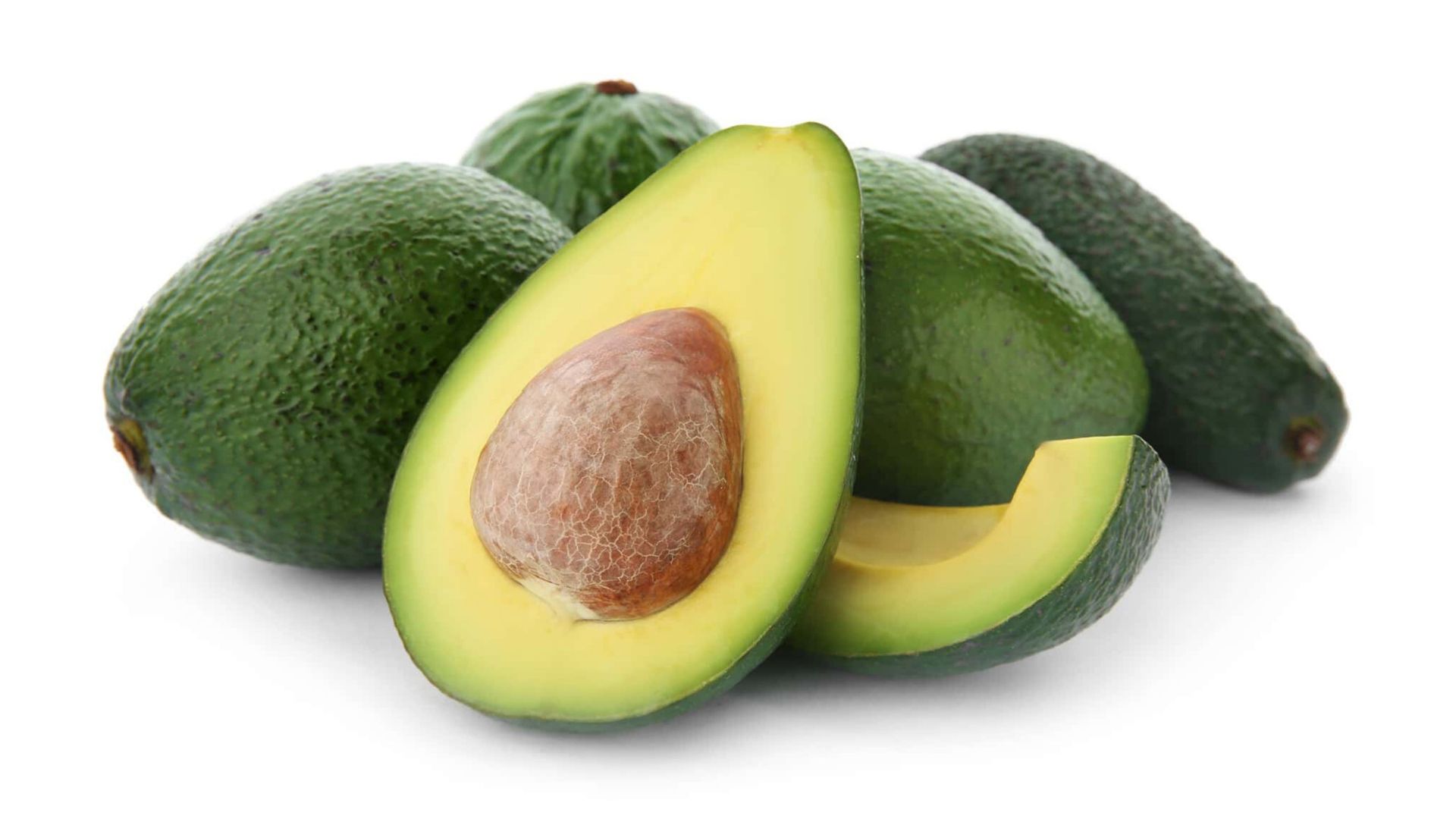Astounding avocados

Avocados, known for their smooth, creamy flesh and bumpy skin, are also known as “alligator pears.” These excellent fruits are a popular food across many cultures.
Avocados, with their unique flavor and smooth, buttery texture, often sparks a debate among curious minds — are they a fruit or a vegetable? Avocados, although not sweet, are botanically fruits and are technically considered a single-seeded berry. Nutritionally, avocados are more like a vegetable and are listed as such in the MyPlate Food Guide.
Avocados are a nutrient-dense food. According to the Dietary Guidelines for Americans, nutrient-dense foods provide vitamins, minerals, and other health-promoting components while containing no or minimal added sugars, saturated fat, and sodium. One-third of a medium avocado (50 grams) has 80 calories and contributes nearly 20 vitamins and minerals, making it a healthy, nutrient-dense choice.
Selection
Try to find a balance between firmness, color, and skin appearance to determine ripeness. Look at the color of the skin of the avocados for any that are darker in color or any large indentations, as these fruits could be riper than the rest or may be bruised. Take the avocado in the palm of your hand and gently squeeze it without using your fingertips, as this can cause bruising. Then, check the firmness of the avocado. If the avocado does not yield, it is considered “firm” and should be ripe in a few days.
Firm, unripe fresh avocados will have a bright green color. Firm avocados are perfect for purchasing a few days (approximately 4 to 5 days) before you plan on serving them, ensuring they will be perfectly ripe and ready to eat.
Ripe, ready-to-eat avocados may have a darker color, but color can vary, so it is best to go by firmness as well as color. It will feel slightly soft but not feel “mushy” to the touch. Ripe fruit is perfect for that day; if you plan to eat it in a day or two, store it in the refrigerator to prevent over ripening or spoilage.
Over-ripened avocados will feel very mushy to the touch; they may have deep indentations and have darker brown or yellowish-colored flesh throughout the inside. It will also have a rancid smell that some describe as smelling like “squash” or “pumpkin-like.”
There’s no denying the satisfaction that comes from enjoying a perfectly ripe avocado. However, encountering an unripe avocado can be disappointing, especially when you crave that deliciously creamy texture over your perfectly toasted slice of bread. Fear not! There are tricks and tips to speed up the ripening process, ensuring your avocados are ready to eat precisely when you need them.
Ripening avocados
To quickly ripen avocados, the best way is to place them in a brown paper bag with a banana or an apple for one to three days until they are ripe.
Whether for guacamole and dips, slicing and garnishing, smoothies, or cooking and baking, understanding the optimal ripeness for different recipes can elevate your meals. For instance, making guacamole requires perfectly ripe avocados with a creamy texture, while slicing and garnishing may benefit from slightly firmer, yet still ripe, avocados. Cooking and baking with avocados may require varying degrees of ripeness, depending on the recipe.
Storage
Unripe whole avocados can be stored at room temperature until they are ripe. Ripe whole avocados can be refrigerated to extend shelf life. Uncut, ripe avocados can be safely stored in the fridge for up to 7 days. To store a leftover avocado half, leave the skin and pit to help limit the surface area exposed to air. Lightly coat the exposed flesh with lemon or lime juice and tightly cover it with clear plastic wrap. The leftover avocado half can be stored in the refrigerator for up to 3 days.
Avocado prep
Wash your hands for at least 20 seconds with warm water and soap before and after preparing food.
Wash all produce under running water just before eating, cutting, or cooking. Even if you plan to peel the avocado before eating, it is still important to wash it first. Dry produce with a clean paper towel or cloth towel.
Cut
Using a paring knife, slice down to the pit in the center of the avocado. Then carefully spin the avocado around, maintaining the blade’s contact with the pit, until you’ve rotated it fully. Use your hands to twist and rotate the two halves apart. The pit will remain in one half.
Pit removal
Removing an avocado pit isn’t as challenging as you might think. Try one of these ways:
Cut the avocado in half and gently push the pit out with your hand.
Wedge the pit out with a fork or spoon after halving the avocado.
Cut the avocado into wedges (quarters) and remove the pit with your hand.
Peel
Gently scoop the avocado meat out of the skin. However, if you want slivers of intact avocado, you will have to carefully remove the skin. Cut the avocado into wedges.
Grasp the outer dark layer of skin and pull it away from the inner green flesh of the fruit. If some of the darker, almost black portions of the skin remain on the green flesh of the fruit, simply cut them away. The skin may be more difficult to peel away on fruit that is not fully ripe.
When it comes to the culinary boundaries of avocados, there are none! Avocado goes incredibly well with almost anything, including soups, salads, dips, desserts, smoothies, and as an addition to breakfast, or even on its own, sprinkled with salt and pepper.
(Sources: fdc.nal.usda.gov; loveonetoday.com; myplate.gov; everdayhealth.com)
Vicki Hayman is the Community Vitality and Health educator at UW Extension Weston County. Contact her at vhayman@uwyo.edu.








